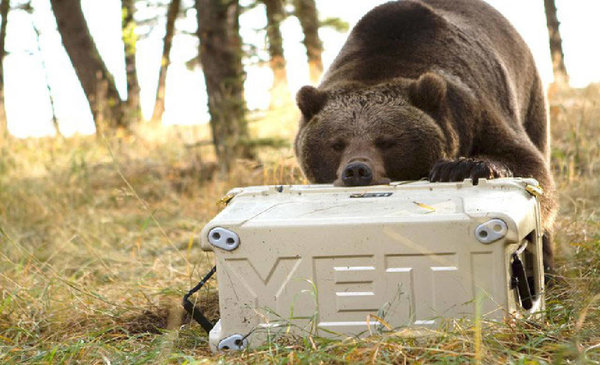
It seems that on a weekly basis, some major brand takes an action that sparks great outrage, especially on social networks. Sometimes the offense is so substantial it becomes global news like dragging a bloodied passenger off a major airline. But often the offense is less apparent – fashion ads that may not seem diverse enough, a beauty campaign that is misinterpreted to have racist overtones. The fickleness of outrage should have brands worried in a polarized information climate that rarely rewards contextualizing or critical thinking.
The emotion of outrage is complex and has three components: 1) It’s negative; 2) It’s strong and powerful (highly charged); 3) It occurs when people experience a violation of a moral boundary. But, as we have shown, there are many cases where people are looking for reasons to be offended, often on behalf of others! For them, no moral boundary has been crossed. Hilton Barbour has coined the term “Outrage Orchestra” to refer to these highly vocal groups that have been weaponized by social networks and stand ready to pounce on any brand mistake or gaffe.
Expressing outrage over something that one does not feel has two social benefits. First, it shows affiliation. It’s also a signal to others. James Bartholomew calls this virtue signaling. He says, “One of the crucial aspects of virtue signaling is that it does not require actually doing anything virtuous. It does not involve delivering lunches to elderly neighbors or staying together with a spouse for the sake of the children. It takes no effort or sacrifice at all.” Social platforms are perfectly suited for this.
Just last week, Nivea was forced to pull their “White is Purity” ad. Observing the crisis that recently befell United Airlines, Shareen Pathak at Digiday remarked, “For United, like most brands operating today, [mitigating the crisis] means an internal reshuffle: Bring your policy, counsel and marketing teams into one place. If not, you’ll have an existential crisis to show for it. And as we know, brands don’t exactly operate in a nimble way. Neither are employees always incentivized to collaborate.” The deep and fundamental transformation happening to brands extends to all a brand’s internal organizations.
A culture of outrage has changed the rules for brands. While it’s relatively easy to pull an ad campaign (even costs associated with Pepsi’s controversial campaign wouldn’t show as more than a rounding error on quarterly earnings), several percentage points on the stock price is harder to explain away. Nell Minnow, Vice-Chair of Corporate Governance at ValueEdge advisors, thinks companies, which are particularly vulnerable to social controversies, should outline such risks and response strategies in financial filings. “They need to let their investors know that they’re prepared to deal with it promptly and effectively to prevent a material deterioration of the stock price. It’s very much like cyberattacks — it’s a relatively recent phenomenon that every company has to be prepared to deal with.”
Brands are built and managed by people, therefore human error is always a possibility. Thankfully, there are ways for brands to mitigate gaffes and outrage; here are four of them.
1. Start performing audience ethnography to understand pains, motivations, and state of mind. Then marry this research to current trends to forecast topics that may be sensitive. Use this ongoing collection and analysis to inform how you craft the story you want to tell as well as to highlight possible situations that may easily be misunderstood. Pepsi, Nivea and Beach Body could have avoided controversy had they invested in cultural and contextual data.
2. Race, Gender, Social Class and Patriotism are four topics (there are more) which need to be considered carefully. For brands that already trade in these topics, a familiarity of position among consumers should provide relative stability in a charged social climate. We don’t question Patagonia’s all-in advocacy for the environment as it is a core component of their brand purpose. But if a brand hasn’t waded into these topics, it needs to get clear on why it has suddenly decided to incorporate these storylines, because consumers will ask, likely with skepticism.
3. Virtue hustling from brands has got to stop. Consumers don’t want to hear it, and the message may be too far out for them to make the connection between the virtue and the brand as they know it. Audi made a double faux-pas when they dabbled in gender and used it to virtue signal. Both backfired. Not only did the girl-power story seem a reach, they had no women on their board of directors. There are plenty of brands who live their values without needing to tell the world how great they are. “Doing the right thing” can no longer be used as a marketing tactic.
4. It’s time to get serious about cross-functional agile teams. If brands want to master the post-PR world, then the silos and behaviors that limit timely and responsive dialog must come down. It was reported that some of the delay in United’s response was due to HR needing to approve messages. This sort of rigidity is no longer viable.
The reality is, many people are deluged with information. A lot of this information reveals parts of our society that can be improved. But the information overload often leads to what psychologists call ‘narcotizing dysfunction’ wherein all the chattering and commentary over an issue substitutes for real action. Smart brands will work to channel this energy into meaningful action and in the process provide new opportunities for growing customer love.
Don’t Let The Future Leave Your Brand Behind. Join Us At The Un-Conference – Marketing’s Only Problem Solving Event. May 1st – 3rd, 2017 West Hollywood, California
The Blake Project Can Help: Accelerate Brand Growth Through Powerful Emotional Connections
Branding Strategy Insider is a service of The Blake Project: A strategic brand consultancy specializing in Brand Research, Brand Strategy, Brand Licensing and Brand Education
FREE Publications And Resources For Marketers















